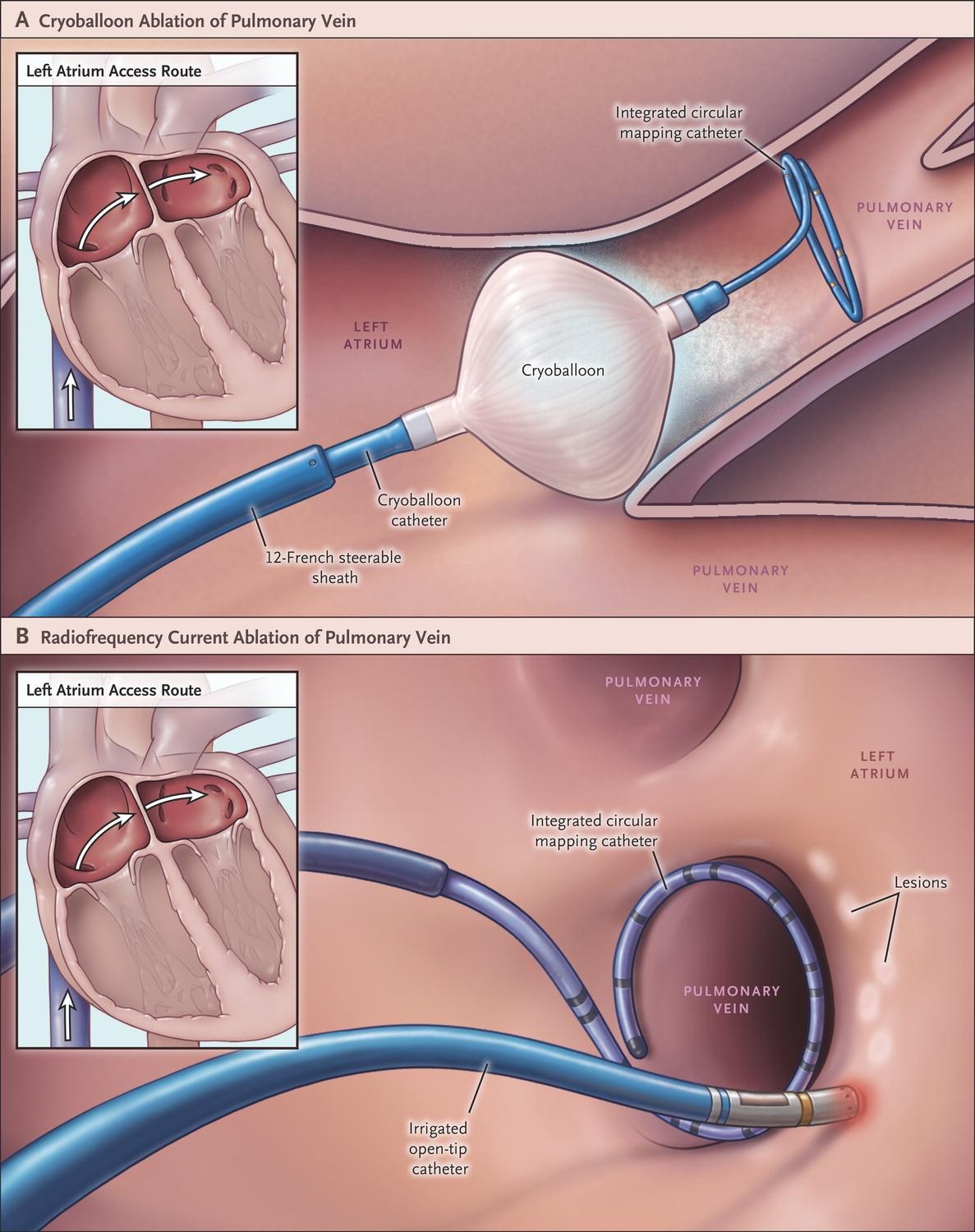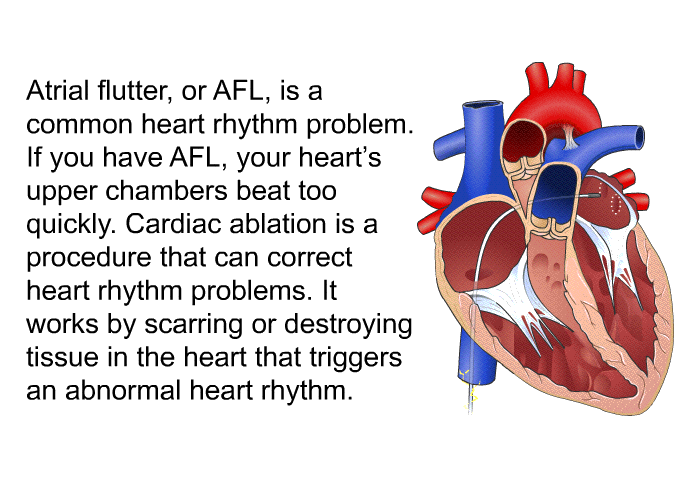

Development of atrial flutter following the initial procedure or.Repeat transcatheter radiofrequency ablation or cryoablation may be considered medically necessary in individuals with ANY of the following: Symptomatic persistent atrial fibrillation.Symptomatic paroxysmal atrial fibrillation or.As an initial treatment for individuals with recurrent symptomatic paroxysmal atrial fibrillation (greater than one (1) episode, with less than or equal to four (4) episodes in the previous six (6) months) in whom a rhythm-control strategy is desired or.As an alternative to atrioventricular nodal ablation and pacemaker insertion in individuals with class II or III congestive heart failure and symptomatic atrial fibrillation or.Transcatheter radiofrequency ablation or cryoablation to treat atrial fibrillation in individuals who have failed to respond to adequate trials of antiarrhythmic medications may be considered medically necessary for ANY of the following indications: Transcatheter Radiofrequency Ablation or Cryoablation Ischemic or idiopathic cardiomyopathy with ventricular tachycardiaĪ catheter ablation procedure not meeting the criteria as indicated in this policy is considered not medically necessary.Individuals without structural heart disease (i.e., ischemic or idiopathic cardiomyopathy) with symptomatic sustained monomorphic ventricular tachycardia or.Bundle branch reentrant ventricular tachycardia or.For treatment of individuals with ventricular tachycardia with ANY of the following indications:.Symptomatic sustained atrioventricular nodal reentrant tachycardia or.

Accessory bypass tract arrhythmia (Wolff-Parkinson-White Syndrome) or.For treatment of individuals with supraventricular tachycardia with ANY of the following indications:.Symptomatic sustained atrioventricular nodal reentrant tachycardia.Ĭomprehensive electrophysiologic evaluation including insertion and repositioning of multiple electrode catheters may be considered medically necessary for ANY of the following indications:.Radiofrequency catheter ablation or modification of the atrioventricular junction for ventricular rate control of symptomatic atrial tachyarrhythmias or.Paroxysmal supraventricular tachycardia or.Atrial tachycardia or atrial flutter or.Atrial ablation for elimination of atrial fibrillation or.Success rates were 83% in patients without and 73% in patients with inducible arrhythmias at the end of the procedure (p=NS).ĬTI ablation, in addition to PV isolation, significantly reduced the number of patients with inducible atrial arrhythmias and inducible AF.Intracardiac catheter ablation of atrioventricular node (AV) function may be considered medically necessary for ANY of the following indications: After one year of follow-up, 23 patients (79%) had no recurrence of arrhythmia. 9/29, p=0.016) and of combined AF and atypical AFL inducibility (19 vs. There was a significant reduction of AF inducibility (16 vs. After CTI ablation, only 11 patients (38%) maintained arrhythmia inducibility (p<0.001)-AF in nine and atypical AFL in two. Of the 29 patients, 26 (90%) had an inducible arrhythmia before CTI ablation-AF in 16, typical atrial flutter (AFL) in seven and atypical AFL in three. Atrial arrhythmias were considered inducible if they persisted for more than 60 seconds. Atrial arrhythmia inducibility was tested with burst pacing down to 150 ms or atrial refractoriness from the proximal coronary sinus. The procedure was performed using a CARTO-Merge mapping system, one or two Lasso catheters, an irrigated ablation catheter and radiofrequency energy. In 29 consecutive patients (23 male, mean age 54.6+/-11.4 years, 11 (38%) with hypertension and four (14%) with structural heart disease, mean left atrial dimension 43+/-6 mm) undergoing PV isolation for paroxysmal or persistent AF, atrial arrhythmia inducibility was tested before and after CTI ablation. The aim of this study is to assess whether CTI ablation after PV isolation reduces inducibility of atrial arrhythmias, particularly AF. Non-inducibility after AF ablation is associated with a higher success rate. A cavotricuspid isthmus (CTI) block may be an easier and safer alternative to left atrial lines for this purpose. In AF ablation, after pulmonary vein (PV) isolation, substrate modification can be increased by performing linear lesions in the left atrium that reduce the fibrillatory surface. Maintenance of atrial fibrillation (AF) depends on the presence of multiple reentrant circuits in the atria.


 0 kommentar(er)
0 kommentar(er)
